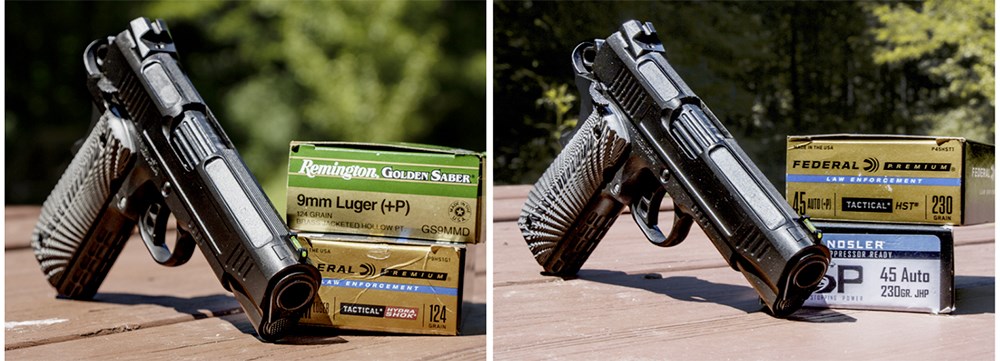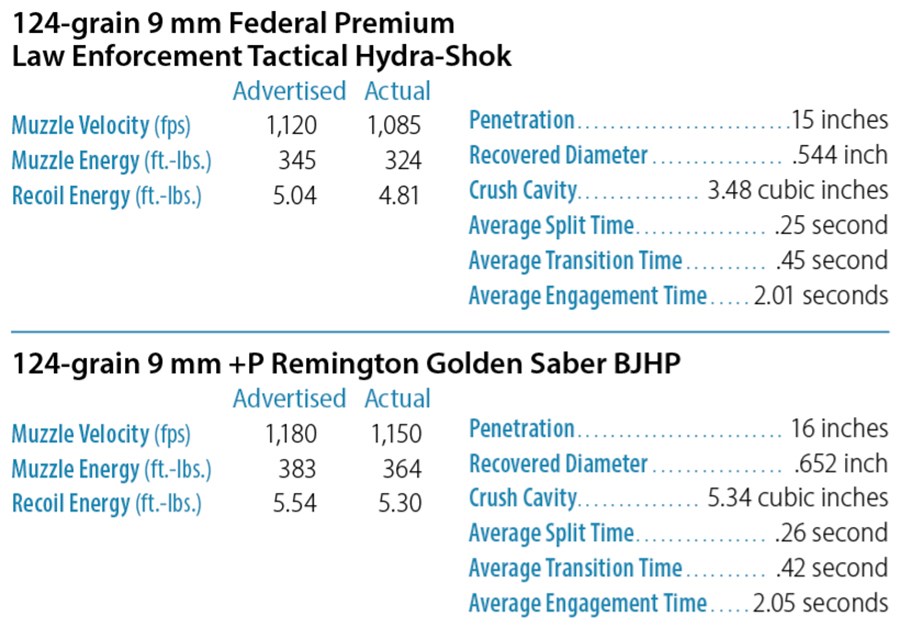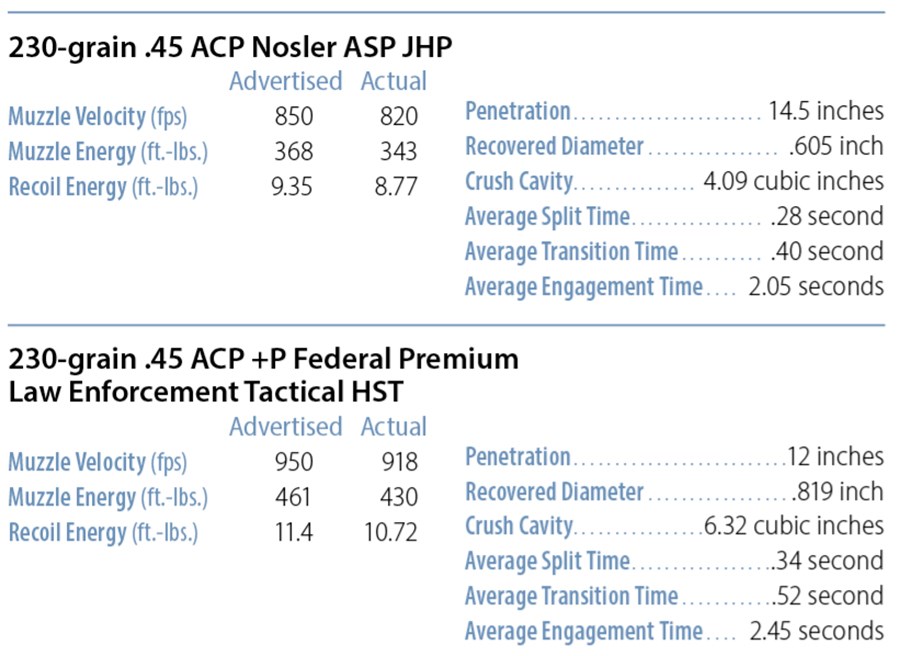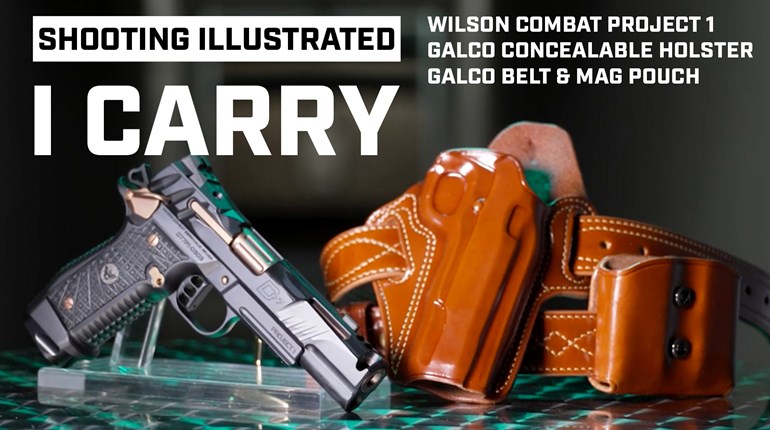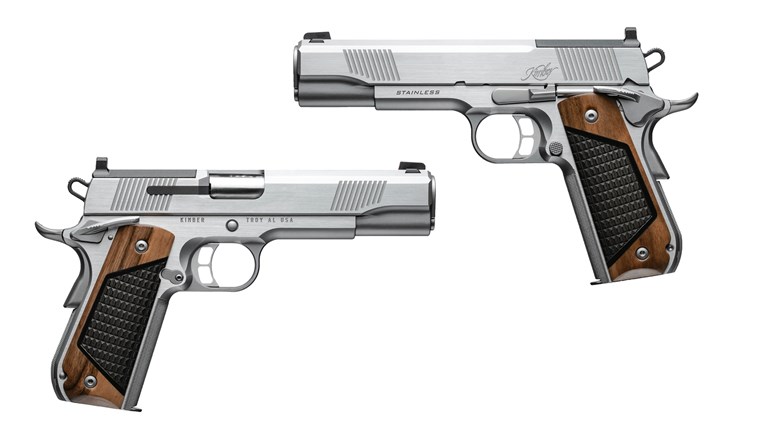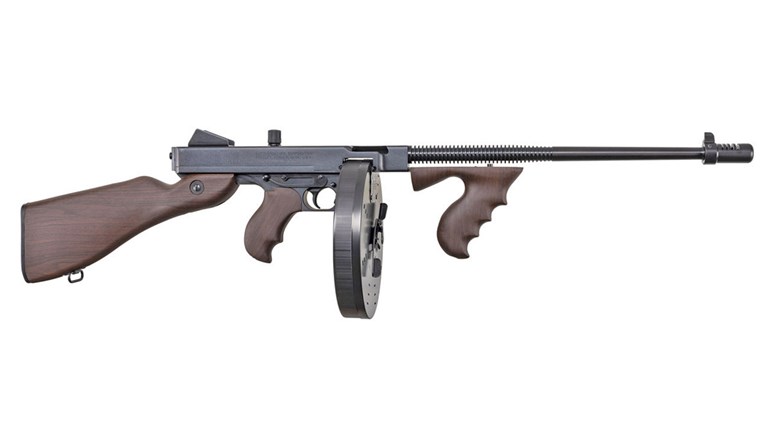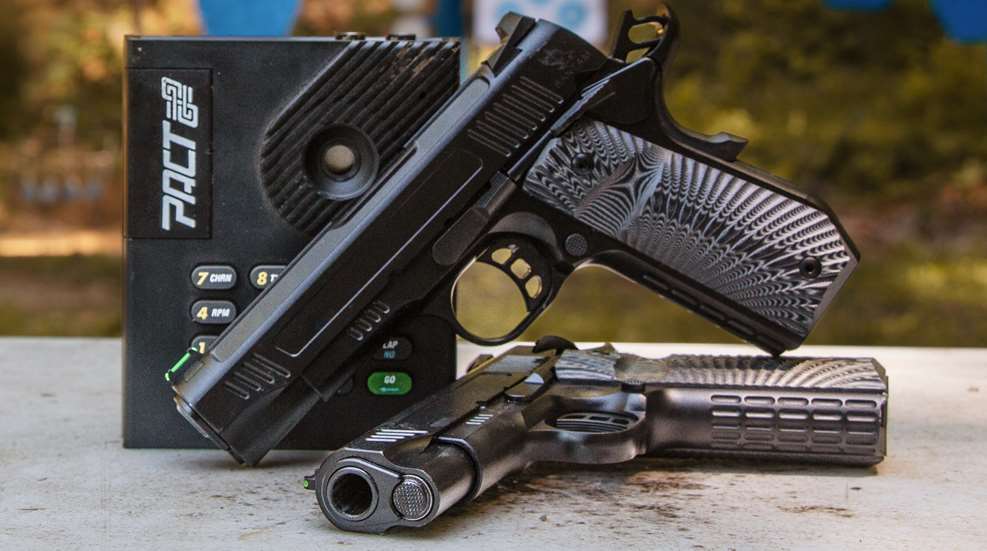
The 9mm vs 45 ACP argument has been going on for more than a century. Many believed the two World Wars answered this question after Americans used their .45s to beat the Germans and their 9mms— twice. But in 1967, the Illinois State Police adopted the Smith & Wesson Model 39 pistol in 9mm, and in 1985 the U.S. Military transitioned from their war-winner to the Beretta M9. A year later, the supposed failure of a 9mm during the FBI’s notorious Miami shootout had all the .45 lovers screaming, “We told you so!” and we ended up with the .40 S&W. But today, the 9 mm is our most prevalent self-defense cartridge.
Why? Basically, for the following three reasons:
The best 9mm loads deliver terminal performance similar to many 45 ACP loads.
Pistols in 9mm hold between 20 and 30 percent more ammo than .45 pistols.
Felt recoil of 9mm handguns is about half as much as pistols chambered in 45 ACP.
This is why the FBI and many other law enforcement agencies have transitioned back to the 9mm. Few will argue these three facts, but are the advantages offered by the nine substantial enough to make it the better choice?
It’s true that the best 9mm loads are equal in performance to many 45 ACP loads. However, if recovered-bullet diameter and penetration mean what we think they do, the best 9mm loads are not the equal of the best 45 ACP loads. Regarding capacity, a first-grader can see a 9mm pistol holds more ammo, but most civilian self-defense shootings are resolved with between one and eight shots. So, capacity might not be all that important after all. But what about shootability? Are 9mm pistols that much easier to shoot more accurately and faster? To find that out, I conducted a test to get to the bottom of the 9mm vs 45 ACP debate.
Testing 9mm vs 45 ACP
I selected three drills I thought represented varied self-defense shooting situations. To eliminate as much human error as possible, there was no drawing from the holster or reloads; all the drills were started at the low ready and required less than seven shots. The first drill was my standard defensive-handgun-test drill, which I call the Forty-Five Drill. It requires placing five shots inside a 5-inch circle at 5 yards in less than 5 seconds. It would specifically highlight recoil control during rapid, sustained fire at a relatively small target.
The next drill was a modified version of Jeff Cooper’s famous El Presidente Drill. In this variation, you engage three steel, torso-size targets at 10 yards, spaced 10 feet apart. All that’s required are two hits anywhere on each target. This drill highlights recoil control and target transition, with minimal emphasis on shot placement.

The final drill was a variation of another Cooper drill known as the Mozambique or Failure Drill. It would be performed at 5 yards, without taking the time to evaluate the effects of the first two shots before firing the head shot. Using an Action Target PT Hostage Target, two shots are fired center mass and then a shot on the swinging head plate is attempted as fast as possible. With this drill, we could evaluate recoil control during fast application on a close-in target, with a transition to a single, precision shot.
I recruited a SWAT officer to help me with this test, and each drill was conducted three times by each shooter, with each handgun and with each test load. The guns used for the test were two identical, lightweight Tisas 1911 Bantam Carry handguns—one in 9mm and one in 45 ACP. Also, standard-pressure and +P loads for both cartridges were used during the test.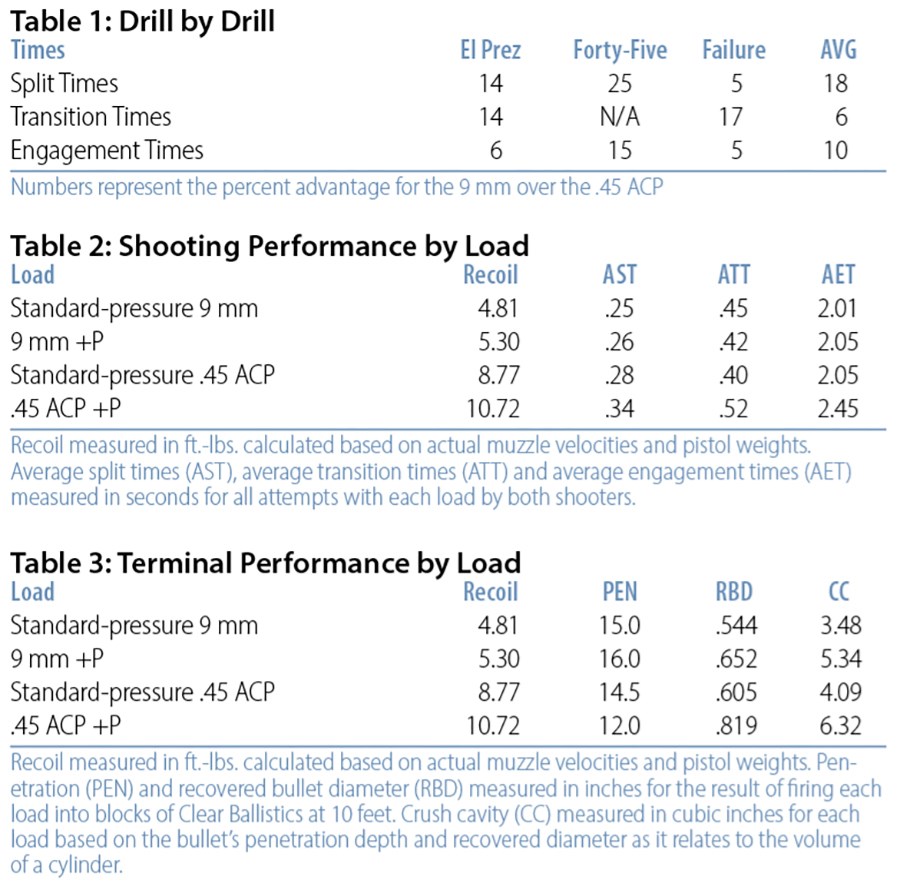
The Results
We did not score this like a shooting match, and we only counted attempts at each drill that were miss free; three clean runs were required with each pistol, with each load, on each drill. The goal was not to see how fast we could miss, it was to see how quickly we could get hits with. Using a shot timer, we recorded the total time it took to complete each drill and the split times between every shot fired. Splits, with a transition between targets, were recorded as “transition” times.
Given the identical pistols, aside from capacity and terminal performance, recoil is the only real difference between 9mm vs 45 ACP. What the results give us is a look at how recoil limits a shooter’s ability to fire multiple shots fast and accurately. There are several practical ways to look at the data.
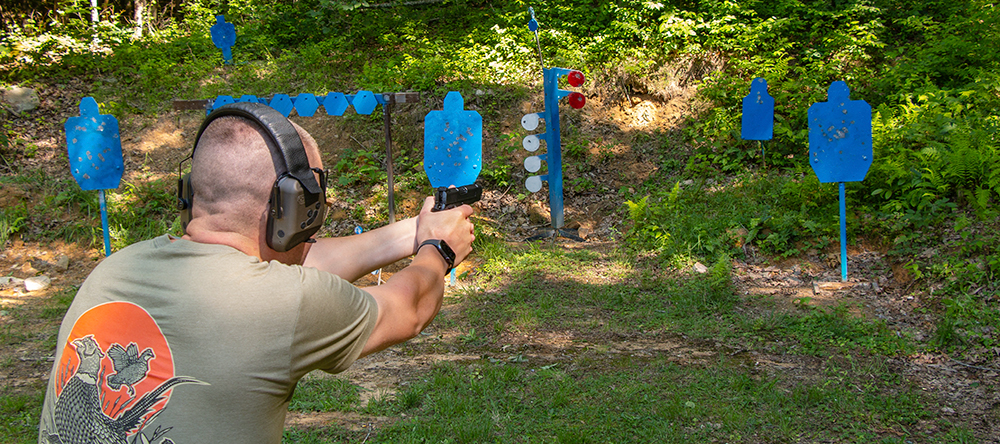
Overall
With all the data averaged, split times were 18 percent faster with the 9mm. This essentially means we could accurately fire five to six 9mm rounds as fast as we could accurately fire four 45 ACP rounds. Transition times—the time it took to switch targets—were very close, but the 9mm did have a six-percent advantage. Regarding the time it took to complete each engagement, the 9mm was faster by 10 percent. Keep in mind, these numbers represent the results obtained by both shooters and all four test loads.
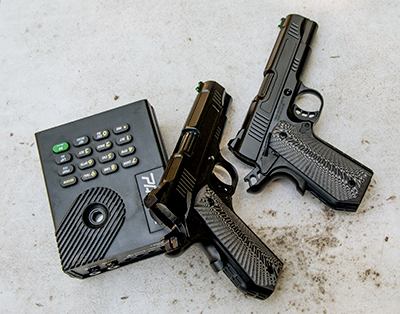
Drill by Drill
Another way to look at the results of that 9mm vs 45 ACP test is by the individual drills. Two things stand out here. The first is that when precision was required, such as repeatedly hitting a 5-inch target in the Forty-Five Drill, the 9mm had a substantial advantage. In the El Prez Drill, where precision shot placement was not as critical, the nine’s advantage was less obvious. And finally, with the Failure Drill, you can see that when hammering a target up close, the difference was not that much. However, when slowing down to make the precision shot, it took longer to transition/recover from recoil with the 45 ACP.
By Load
What we’re learning in this 9mm vs 45 ACP test is not earth-shattering; pistols with more recoil are harder to shoot fast and accurately. It’s not like we didn’t know that. However, I think the most interesting thing this data shows is how different 9mm and 45 ACP loads performed. As you can see, the standard-pressure 45 ACP load with 8.77 ft.-lbs. of recoil performed very similarly to the +P 9 mm load with only 5.3 ft.-lbs. of recoil. You may be able to perform just as well with a little more recoil, but at some point, the recoil of the .45 will begin to negatively impact on-target performance.
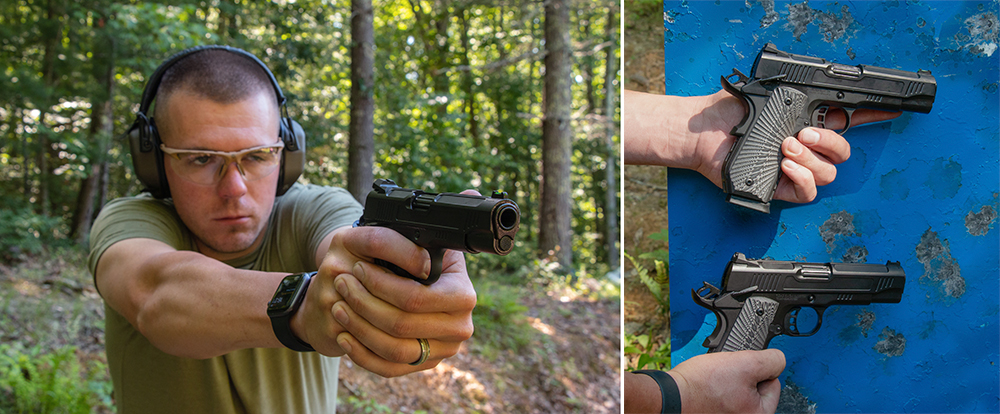
For us, this was painfully obvious with the 10.72 ft.-lbs of recoil delivered by the 230-grain +P 45 ACP load. Compared with the 124-grain +P 9mm load, our times increased across-the-board by about 20 percent. What this data fails to effectively convey is how hard 10.72 ft.-lbs. of recoil is out of a 27-ounce handgun—it is not enjoyable.
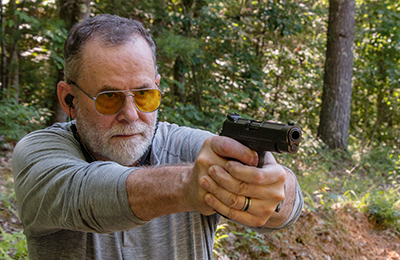
Terminally Speaking
This was a lot of shooting to prove a known fact, but it does provide an idea of exactly how much recoil can negatively impact shooting performance. What you might be wondering is exactly what you’re paying for with more recoil? If we’re going to reduce our ability to shoot fast, what type of terminal performance will we get in return? To enhance the shooting data, we also fired each of the four test loads into Clear Ballistics gelatin.
The 6.32-cubic-inch crush cavity delivered by the Federal 230-grain +P HST load is impressive, but it comes with a cost, and that cost is an uncomfortable shooting experience and an increase in the time it takes to fire multiple shots. Measuring recoil can be subjective, but more never helps you shoot better. Everyone will have different limits, but at some point, you must decide if the terminal performance you gain is worth the reduction in shootability that comes with it.
What the information from this test—and the massive spreadsheet created to digest it—might do best is to explain why most law enforcement agencies have gone back to the 9mm. With the best 9mm loads, you get terminal performance similar to standard 45 ACP loads out of a gun that holds more ammunition and is easier to shoot fast and accurately. But, what this also shows is that with a 45 ACP, you can select a lesser-recoiling load and shoot nearly as fast and accurately as you can with a 9mm pistol, while delivering similar terminal performance. If you do that, the only thing you’re giving up with the .45 is capacity.
No one ever said the choice is easy, and the right answer will not be the same for everyone. Above all, the most important takeaway might be that, while picking the right cartridge is important, it may not be as important as selecting the right load for it.
9mm vs 45 ACP Cartridge/Ammunition Synopsis
Comparing the 9mm vs 45 ACP cartridges by themselves is simply not enough; ammunition must be taken into consideration. The following information offers a comprehensive look at the ammunition used in the test. There are better and worse loads for both cartridges out there, but here you can look at two loads that deliver average performance, and two loads that represent the best performance available from each cartridge.